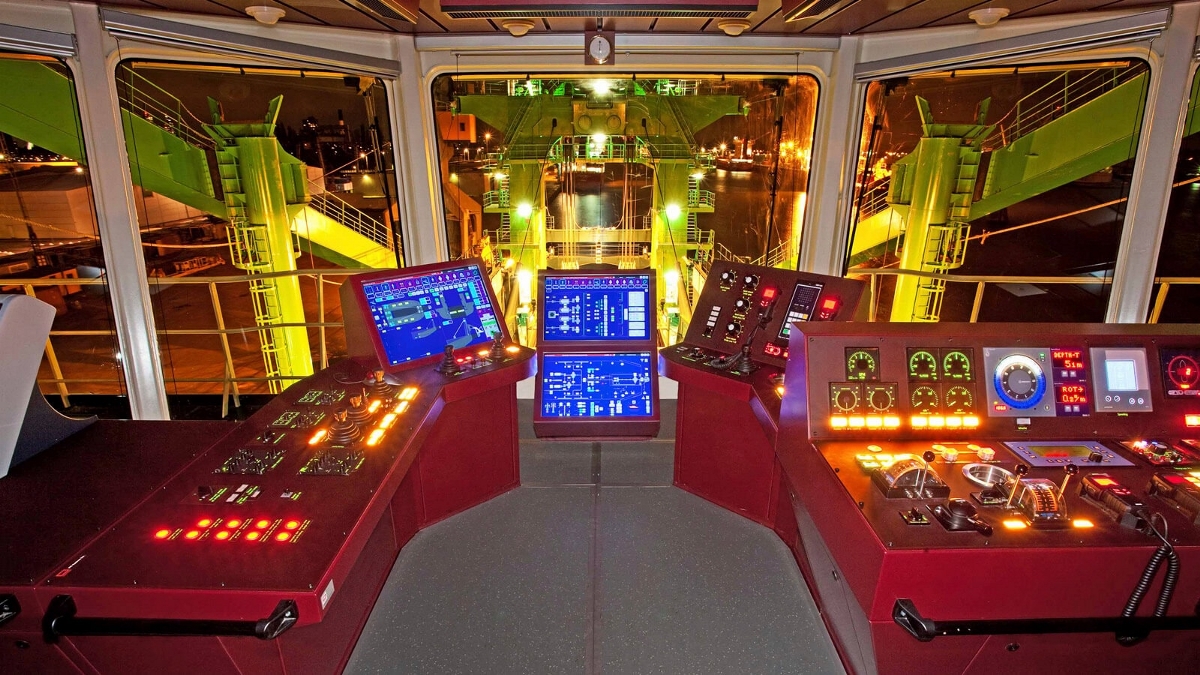Data at the heart of digital transformation

In the maritime industry, digitalisation is a key theme in becoming more efficient and sustainable. As a vessel or fleet owner, you are always looking for ways to increase efficiency, for example through a higher production, a more efficient way of working for your crew or reduced fuel consumption. At the same time, safety improvements are also key: how can you minimise risks for your people. In the end, you want to be better positioned to get more return on your investments.
Digital technologies can be applied to achieve this. These digital technologies include all systems, devices and software that generate, store or process data. Data is at the heart of the digital transformation; initially some key data was available on paper, now we are able to measure practically everything and have the data digitally available. At the same time all this data is just a means to an end. How it is applied is where the real value can be found.
With machine-to-machine communication, Internet-of-things, artificial intelligence and other digital solutions, data is generated on board of a vessel. This data is used to monitor operational efficiency and can be translated into actionable insights for maintenance activities and fleet management. At the same time communication between a vessel and the (back) office will become easier and more secure. This allows you to deploy scarce specialist knowledge across your assets.
So how can we as Royal IHC help? We integrate data in our (digital) products to make these smart for three specific purposes.
Data to improve operational efficiency
When you are responsible for the operations of a vessel or a fleet you want to see how your assets are making money in ‘real time’: how is the project progressing? Do we achieve the m3 of output within the project milestones? How much fuel do we consume in the operation?
For our cutter suction dredgers, we can retrieve data from the vessels and automatically monitor the operations to help identify inefficiencies. For instance, we can identify when a pump is cavitating, resulting in production loss and excessive wear and tear. This enables you and your crew to adjust operations, save costs on pump replacement and improve the project result.
For trailing suction hopper dredgers, we can combine a vessel's data with the input from the crew. This provides insight in the dredging cycle and an explanation for operational downtime or technical downtime. Additionally, we can benchmark the performance of a single vessel over time, compare performance across your fleet or with comparable vessels of other dredging contractors.
With the insights provided with these digital solutions, you can optimise the performance and profitability of your fleet, maximize safety on board and avoid any unnecessary downtime.

Data to enhance maintenance
Maximising return on investment requires the continuous availability of an asset and avoidance of unplanned downtime. This can be controlled by managing maintenance activities.
Maintenance can be plotted on a horizontal line, ranging from reactive to predictive. With a reactive maintenance strategy, digital products can help when responding to equipment failure by identifying sensor failure or assisting in reconfiguration.
What if you could test run a vessel and equipment before you start your next project and know exactly when and where problems will occur? The application of sensor data allows for the creation of a virtual representation of the actual vessel or equipment, as a so-called Digital Twin.
This provides the opportunity to combine actual behaviour with what should be expected. This way, it is possible to notice degradation of the equipment, act proactively before serious problems occur and plan maintenance activities. Demanding projects can now stay on track and on time.
In case of a predictive maintenance strategy, digital solutions are used to help you determine the best moment to execute a maintenance job. They can also assist with preparing for the execution of a job, for instance by ensuring spare parts and specialist support. Planned maintenance and condition monitoring services further enhance maintenance.
Data to boost product development
An increase in the availability of data on how vessels perform opens doors for continuous improvement and product development. With a feedback loop of data measured in the field, we can make comparisons with the designs and use the insights for more efficient products. Which is why we will continue to implement additional sensors on board of our vessels and equipment to better monitor the performance against the product tolerances.
We believe digitalisation is key to future business success in the maritime industry and possibilities will only continue to grow!
Discuss your data challenge with us
The possibilities seem endless in how, where and when to implement your assets' data for efficiency and sustainability improvements. Unsure of where to get started, or if you would like to discuss your data challenge, do reach out to us.
More information?
-

Laura
ZwaanManager Digital

Do you want to discuss your data challenge?
Fill in the form and our experts will contact you.